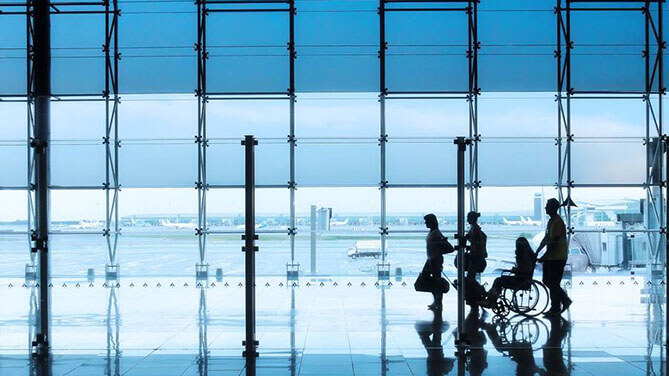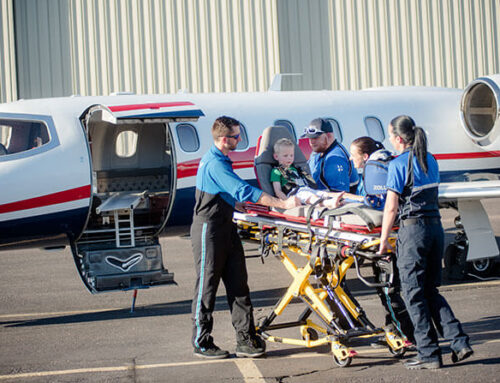AirCARE1 was recently featured in an ITIJ (International Travel & Health Insurance Journal) article focusing on the importance of properly assessing a patient’s condition prior to medical air transport. Here is what ITIJ had to say:
Denise Waye, President of AirCARE1, looks at how technology is helping to provide a true assessment of a patient’s condition ahead of pick-up
According to the World Travel and Tourism Council, the travel and tourism industry is one of the fastest growing sectors in the world. With easy access to flights, cruises, and tour groups, leisure travellers and adventure seekers alike are travelling to more remote and exotic locations. And while most holidays go as scripted, there is always the risk of an unexpected injury or illness.
“Incorporating video technology by assistance companies or other service providers into the fact-gathering process can decrease a significant number of problems before sending a medical escort bedside”
While travel insurance policies provide a way for holiday travellers to be repatriated back to their home country, far too many travellers forgo travel insurance. These travellers also often reach out to assistance companies and service providers when injury or illness hits. In many cases, patients with a stable diagnosis can be transported home via a commercial airline with a medical escort. While this is the most cost-effective repatriation solution for insurers and self-paying patients alike, it is not without its own set of complications.
The Full Picture
A key challenge for travel assistance companies or service providers is being able to ascertain the complexity of the patient’s situation remotely before a medical escort is dispatched. Patient status is generally relayed by the sending facility or, at times, directly from family members. The accuracy of information can be compromised for a number of reasons: language barriers; inaccurate information due to lack of understanding of the requirements for a medical escort repatriation; or even misinformation.
Medical escort repatriations booked directly by family members increase the complexity of the transport. Understandably, family members are often looking for the most economical way to repatriate their loved one home, regardless of the complexity of the diagnosis. Still, obtaining the most accurate information is of the highest priority to ensure the safety of the patient. Travel assistance companies as well as service providers need to be more vigilant and knowledgeable when guiding families through the information-gathering process, as reports received from family members might be inaccurate or even misrepresented.
A case in point: AirCARE1 was hired by a family to repatriate a US citizen who had been visiting his family in a remote village outside of Udon Thani, Thailand. According to the family, the patient had suffered a fall in his home a number of months prior, resulting in a broken hip that had healed in an unnatural position. Reports given to our staff stated the patient was able to take care of himself but had limited mobility, although he was able to self-transfer with assistance.
The patient report came entirely from the family as the patient had never gone to a hospital or seen a physician. Due diligence was performed, including a detailed report from the family that comprised of current diagnosis, past medical history, medications, any allergies, as well as a description of the patient’s current ADLs. The ability to be able to withstand a journey back to the US was also discussed with the family.
After multiple phone calls, and based on the information presented, the patient was deemed fit to fly commercial in business-class seating. However, upon arrival at the bedside, it became clear the family had understated the condition of the patient due to their extreme desire to have the patient repatriated home.
A bedside assessment revealed the patient was weaker and more frail than originally stated. The patient also displayed signs and symptoms of sepsis. After a discussion with the escort nurse on site, it was determined the patient would be unable to withstand the journey back to the US and was in need of immediate medical attention. The decision was made to fly the patient to Bangkok to receive medical attention in order to stabilise him first.
A Little Help From Tech
“Travel assistance companies as well as service providers need to be more vigilant and knowledgeable when guiding families through the information-gathering process”
This is just one example of how repatriating patients from around the world can become complex due to miscommunication, lack of knowledge from family members, or family members overstating or misrepresenting a patient’s condition in order to fit the requirements of a commercial transport. To help protect from miscommunication or misrepresentation, technology can help to confirm a patient’s fitness to fly – including the use of apps such as Skype, WhatsApp and Marco Polo; apps downloaded on cell phones that provide the opportunity to ‘trust but verify’ a patient’s condition.
Marco Polo bills itself as the ‘video walkie talkie’ and is successfully being used to confirm the viability of commercial medical transportation for patients by providing a means to have visualisation of the patient. It has successfully been used to determine if a patient is truly fit to fly on a commercial flight. Through video, a nurse can see the patient and determine the accuracy of the report received. If the patient does not meet the criteria for business-class repatriation, other options, including a commercial stretcher or utilising a Patient Transport Compartment are discussed. If the patient is clearly unable to fit any of these criteria, or if these options are not available, then the patient would be informed of the need for an air ambulance transport.
Incorporating video technology by assistance companies or other service providers into the fact-gathering process can decrease a significant number of problems before sending a medical escort bedside. Technology can not only increase confidence in assuring the patient’s condition as it was represented, but also allows medical staff at travel assistance companies and service providers to be better prepared for the repatriation, to allow the safest transport of the patient.
To view the original article on ITIJ, click here.






